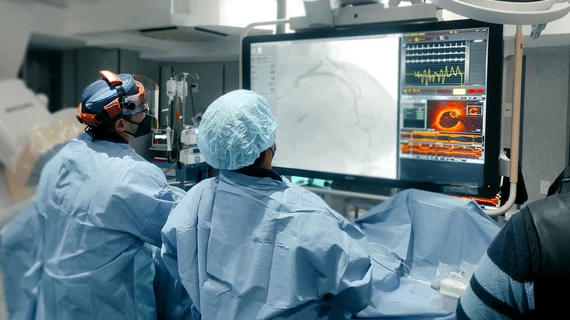FDA grants new imaging tool for CTO interventions its breakthrough device designation
Simpsons Interventions, a California-based healthcare technology company, has received the FDA’s breakthrough device designation for its Acolyte Image Guided Crossing and Re-Entry Catheter System.
The new device is designed to help interventional cardiologists treat patients with coronary chronic total occlusions (CTOs) who do not respond to medical therapy. It delivers real-time optical coherence tomography (OCT) visualization that helps with the guidance and placement of guidewires during revascularization procedures.
CTOs occur when patients develop 100% stenosis in a coronary artery. Crossing the CTO can provide certain challenges for interventional specialists—any complications may require the care team to shift to coronary artery bypass graft surgery (CABG). According to Simpsons Interventions, their device’s real-time OCT capabilities improve cardiologist performance and reduce the risk of patients requiring CABG.
“We are thrilled to receive FDA's breakthrough device designation for our Acolyte Image Guided Crossing and Re-Entry Catheter System,” John B. Simpson, PhD, MD, founder and CEO of Simpson Interventions, said in a statement. “This designation recognizes the transformative potential of our technology in addressing a critical unmet need in the treatment of patients with coronary chronic total occlusions. We are committed to advancing the field of interventional cardiology and improving patient outcomes through innovation.”
The Acolyte Image Guided Crossing and Re-Entry Catheter System has not yet been approved by the FDA. The FDA’s breakthrough devices program is designed to help medical devices make it through the approval process faster than they would otherwise. The agency’s representatives work directly with the device manufacturer, for example, and any submissions related to the device will be prioritized.

